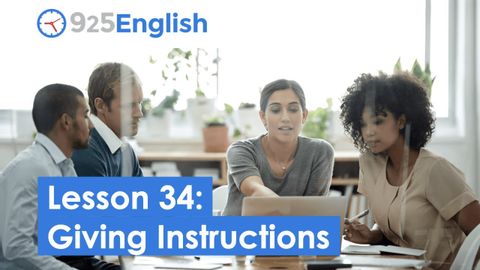
Subtitles & vocabulary
Business English - 925 English Video Lesson 34 - How to Give Instructions in English
00
林宜悉 posted on 2020/10/24Save
Video vocabulary
practice
US /ˈpræktɪs/
・
UK /'præktɪs/
- Noun
- The office and place for legal or medical work
- Doing something many times to become better at it
- Verb (Transitive/Intransitive)
- To work as a doctor or lawyer
- To live according to the teachings of a religion
A2TOEIC
More sense
US /sɛns/
・
UK /sens/
- Noun (Countable/Uncountable)
- Certain mental feeling or emotion
- Normal or clear state of mind
- Verb (Transitive/Intransitive)
- To perceive using sight, sound, taste touch etc.
- To recognize the presence of something
A1TOEIC
More conversation
US /ˌkɑnvɚˈseʃən/
・
UK /ˌkɒnvəˈseɪʃn/
- Uncountable Noun
- Talking with other people; discussion or chat
- General communication or interaction.
A2
More Use Energy
Unlock All Vocabulary
Unlock pronunciation, explanations, and filters
